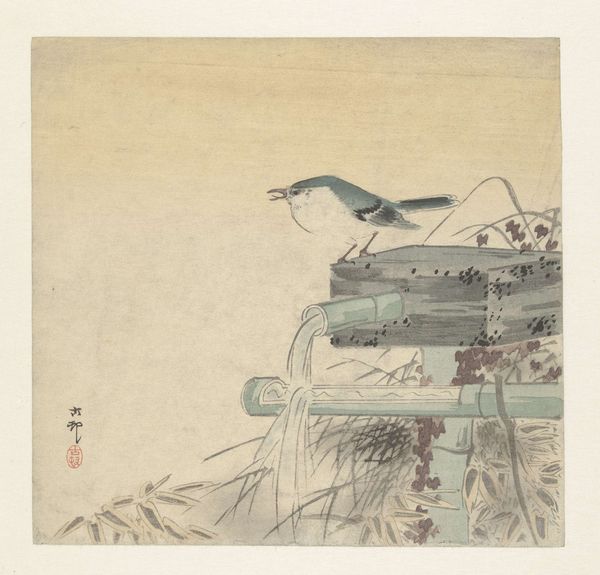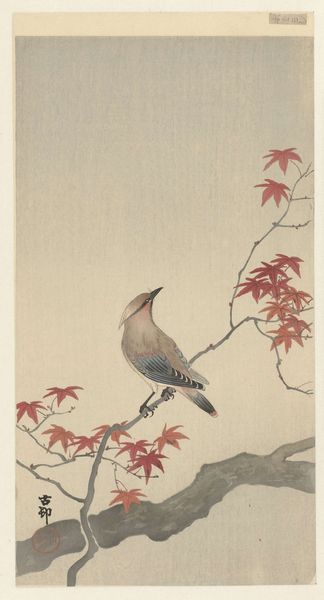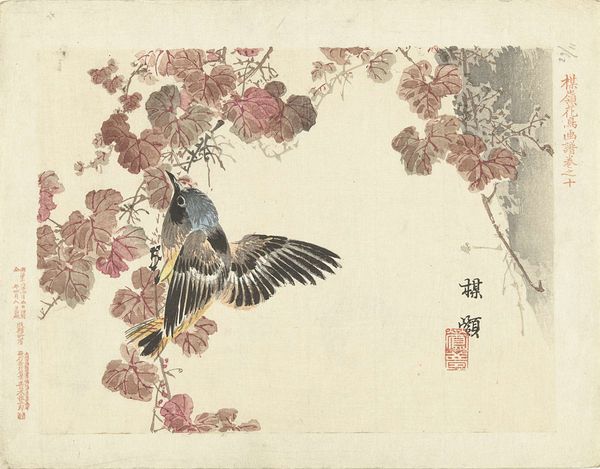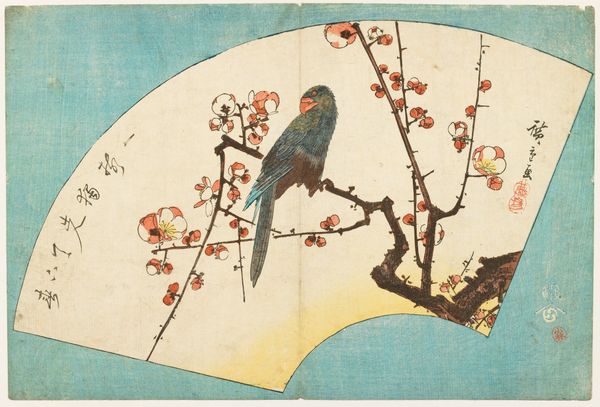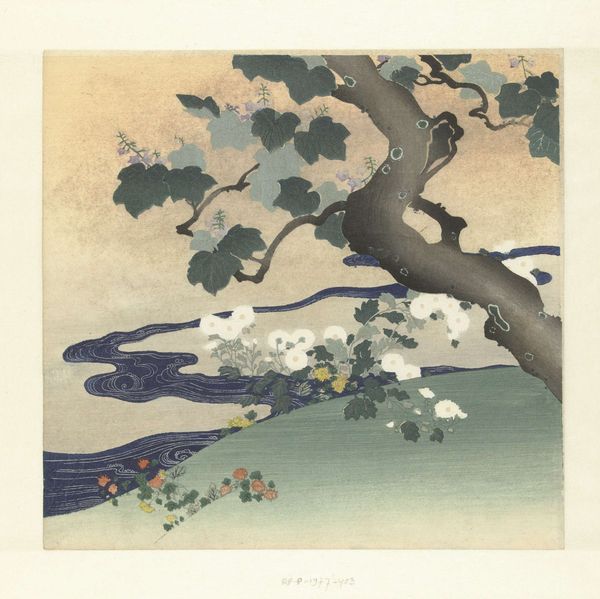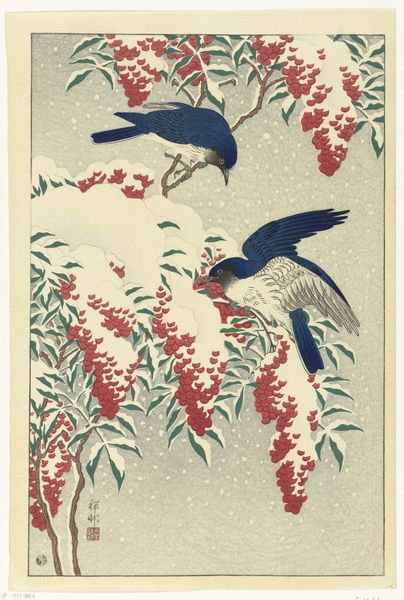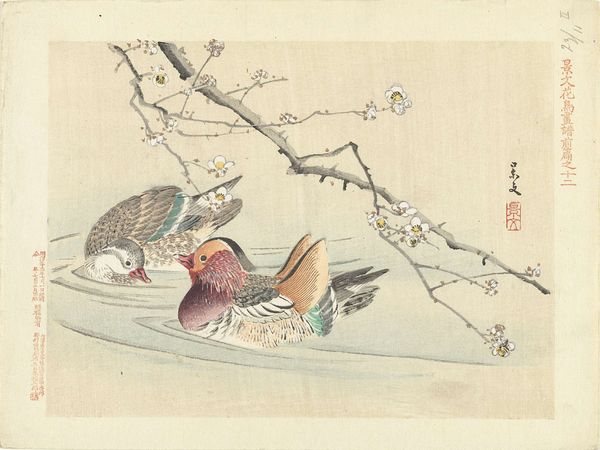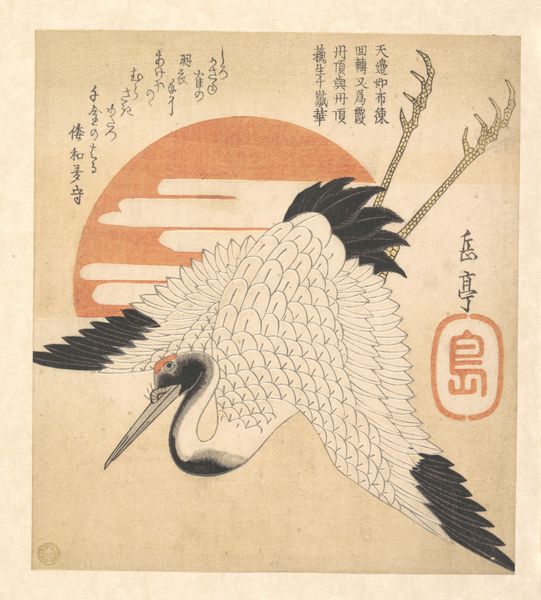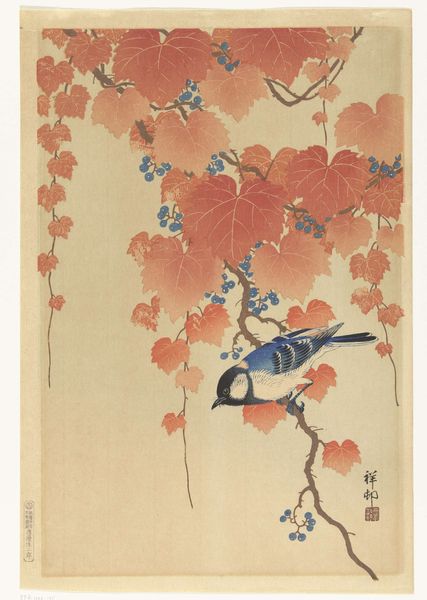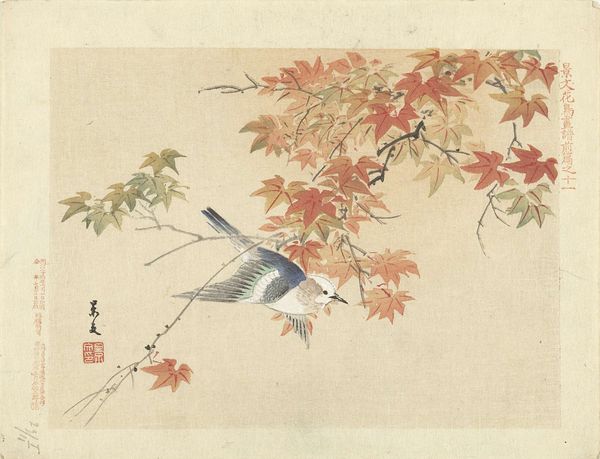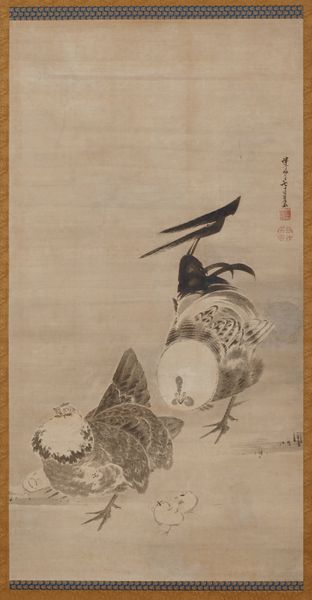
Dimensions: height 236 mm, width 240 mm
Copyright: Rijks Museum: Open Domain
Editor: So, here we have Ohara Koson's "Two Doves on an Autumn Branch," made sometime between 1900 and 1936. It's a woodblock print in the Ukiyo-e style, and the muted colors give it such a calm, contemplative feeling. What catches your eye about it? Curator: The doves immediately resonate, don’t they? Throughout history, doves often symbolize peace, purity, and new beginnings. Notice how one dove is white, the other, a striking blue. Colors play such a vital role in symbolic language. What do you suppose the autumn branch might signify? Editor: Well, autumn often represents change, the passing of time, maybe even something ending? Curator: Precisely. Now, consider the placement of the doves on this 'ending' branch. Are they mourning the passage of time, or are they finding solace in each other amidst change? Does the white dove’s ‘purity’ stand in contrast to the vibrant experiences the other dove embodies through its darker coloration? Editor: I hadn't thought about their colors having such different meanings! So the contrast between them creates almost a dialogue, right? Curator: Indeed. And within Japanese aesthetics, there's a concept of 'mono no aware', the pathos of things, the awareness of impermanence. The pairing of the doves with the autumn foliage speaks to this. What does this print evoke in *you* now, with that in mind? Editor: Now I’m seeing this beautiful dance between sorrow and hope. They aren't just doves on a branch. They are the past, the present, the future, all nestled together! Curator: A poignant reflection! Visual symbols are such effective emotional conduits. Editor: I will definitely never look at doves the same way! Thank you!
Comments
No comments
Be the first to comment and join the conversation on the ultimate creative platform.
